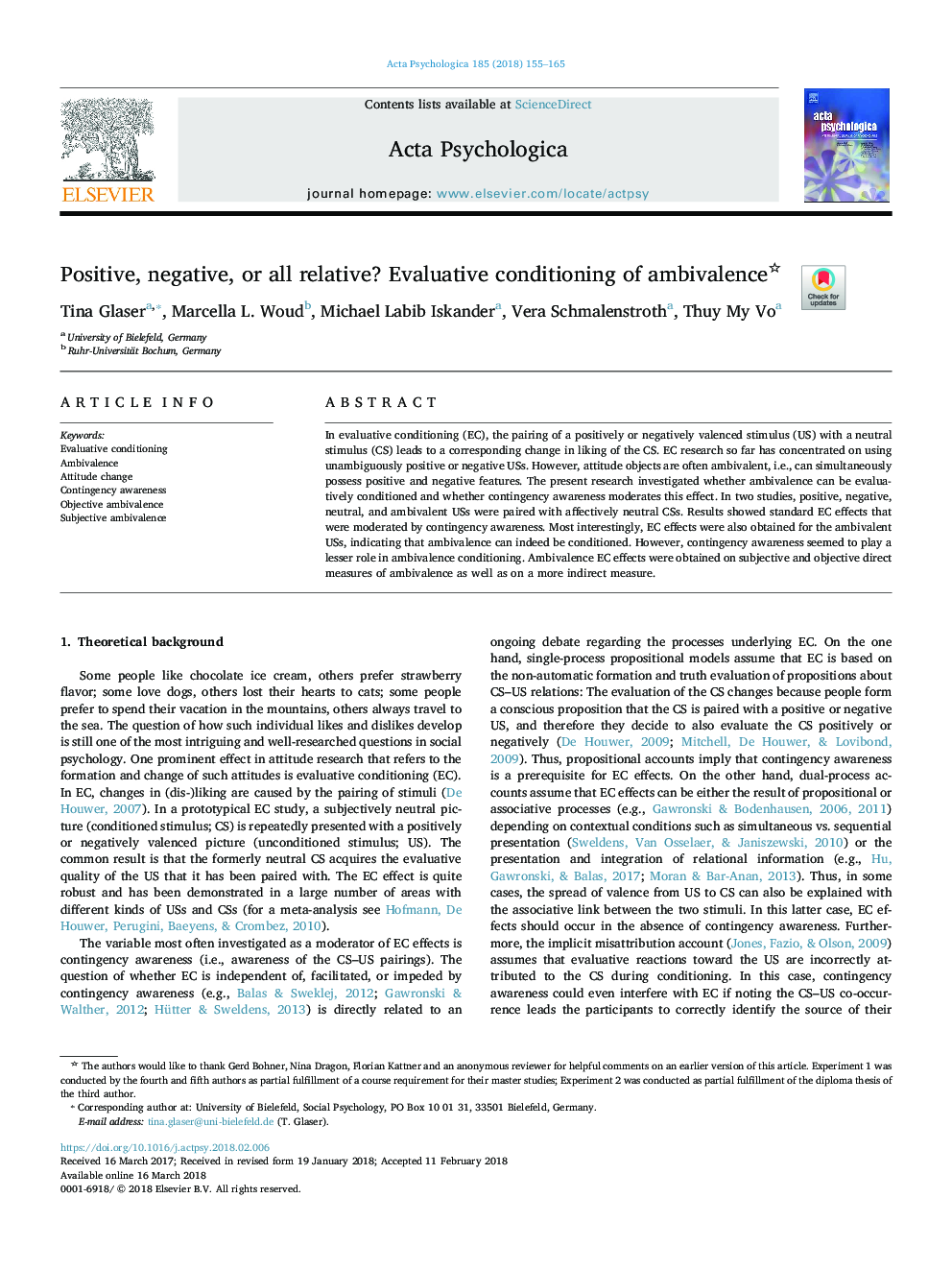| Article ID | Journal | Published Year | Pages | File Type |
|---|---|---|---|---|
| 7276767 | Acta Psychologica | 2018 | 11 Pages |
Abstract
In evaluative conditioning (EC), the pairing of a positively or negatively valenced stimulus (US) with a neutral stimulus (CS) leads to a corresponding change in liking of the CS. EC research so far has concentrated on using unambiguously positive or negative USs. However, attitude objects are often ambivalent, i.e., can simultaneously possess positive and negative features. The present research investigated whether ambivalence can be evaluatively conditioned and whether contingency awareness moderates this effect. In two studies, positive, negative, neutral, and ambivalent USs were paired with affectively neutral CSs. Results showed standard EC effects that were moderated by contingency awareness. Most interestingly, EC effects were also obtained for the ambivalent USs, indicating that ambivalence can indeed be conditioned. However, contingency awareness seemed to play a lesser role in ambivalence conditioning. Ambivalence EC effects were obtained on subjective and objective direct measures of ambivalence as well as on a more indirect measure.
Related Topics
Life Sciences
Neuroscience
Cognitive Neuroscience
Authors
Tina Glaser, Marcella L. Woud, Michael Labib Iskander, Vera Schmalenstroth, Thuy My Vo,
